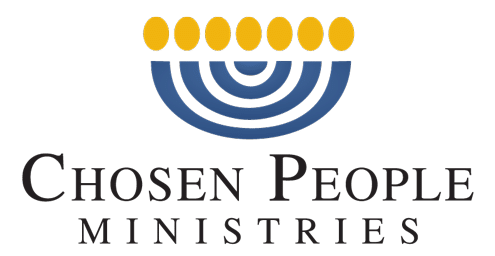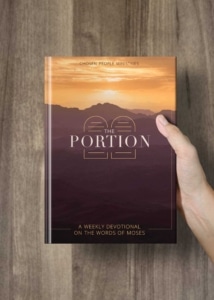If you have ever attended a synagogue or liturgical church, you likely heard Scripture read consecutively from week to week.
Synagogues refer to the weekly reading as the parashah. Each parashah has a name that comes from the first significant word in that reading. For instance, the opening verse of Genesis reads, Bereshit barah Elohim, “In the beginning God created. . . .” Therefore, the first parashah on the Hebrew calendar is Bereshit, which spans Genesis 1:1–6:8.
While the term parashah is Hebrew for “exact statement,”[1] it has come to mean “a section of the [Torah].”[2] You may also see this word spelled as parsha. When naming a specific parashah reading, one replaces the -h in parashah with a -t. So, the first reading of the Jewish year is called “Parashat Bereshit.” In this article, we will discuss the parts of the parashah, its history, and how you can benefit from it.
The Parts of the Parashah
Each parashah traditionally has two parts: the Torah portion and the Haftarah reading. Many messianic believers and congregations add a third Scripture section—a passage from the B’rit Hadashah (New Testament).
Torah
The Torah portion is the foundation of the parashah. There are fifty-four portions in the Torah, which are read in their entirety over the course of a year. Due to the addition of special holiday readings, on which the regular Torah portion is not read, and a fifty-week Hebrew calendar, some Sabbaths combine two portions together. The length of each Torah reading depends on the week but usually includes three to six chapters. For instance, Parashat Vayikra includes Leviticus 1:1–5:26. Tzav, the following parashah, only covers Leviticus 6:1–8:36.
The annual Torah cycle restarts every September or October, shortly after the Jewish high holidays. Simchat Torah (“joy of law”) is the holiday that marks the end of one year’s reading cycle and the start of another. As soon as one cycle ends, the next one begins. No matter how many times one has read the Torah, there are always more riches to discover in God’s word. This never-ending cycle of going through the Torah speaks to its central role in Judaism. Genesis, Exodus, Leviticus, Numbers, and Deuteronomy are the basis for all Jewish religious thought.[3]
Likewise, followers of Messiah must remember that the rest of Scripture builds on these books. Consider creation, the problem of sin, God’s covenant with Abraham, deliverance from Egypt, or Israel’s settling in the land. These themes begin in the Torah, but they echo throughout the Bible. Yeshua Himself said, “Do not think that I came to abolish the Law or the Prophets; I did not come to abolish but to fulfill. For truly I say to you, until heaven and earth pass away, not the smallest letter or stroke shall pass from the Law until all is accomplished” (Matthew 5:17–18).
Haftarah
Second is the Haftarah portion, meaning a passage from the Prophets. The parashah calendar does not go through all the prophetic books. Haftarah readings are much smaller than the Torah portion, usually spanning only a chapter or less. Sections from the Prophets generally relate to the Torah passage read that week. Both the Torah and Haftarah readings are set. That is, the same excerpt from the Prophets always follows the same excerpt from the Law.
Take Parashat Shemot, for example. In that week’s Torah portion (Exodus 1:1–6:1), God appeared to Moses. He directed him to return to Egypt, where he would act as God’s mouthpiece before Pharaoh. God also revealed His name, “I AM WHO I AM” (Exodus 3:14). The Haftarah reading for this parashah includes Isaiah 29:22–23:
Therefore thus says the Lord, who redeemed Abraham, concerning the house of Jacob: ‘Jacob shall not now be ashamed, nor shall his face now turn pale; but when he sees his children, the work of My hands, in his midst, they will sanctify My name; indeed, they will sanctify the Holy One of Jacob and will stand in awe of the God of Israel.’
The theme of sanctifying God’s name in Isaiah fits very well with God’s introducing His name in Exodus. Isaiah also mentioned how the Lord “redeemed Abraham” in these verses. This line reminds one of how God rescued Israel from slavery, which began in the first chapters of Exodus.
Brit Hadashah
Many messianic congregations also include an excerpt from the B’rit Hadashah, or New Testament. This addition is unique to the Messianic Jewish community. Reading the New Testament alongside the Torah and the Prophets makes a crucial claim—both the Hebrew Scriptures (or Old Testament) and New Testament are on equal footing. Not only is every part of the Bible God’s Word, but all these writings point to and proclaim a consistent message—Jesus is the Messiah. Peter, for instance, wrote of Paul’s letters and “the rest of the Scriptures” (2 Pet 3:16, emphasis added). This statement implies that the apostles’ teaching merits the same respect and study as the Law and Prophets.
Though various groups have offered suggestions, there is not a set calendar of B’rit Hadashah readings like there is for the Torah and Haftarah portions. Different messianic congregations may have alternate New Testament readings for the same week. Whatever calendar a certain group may use, the B’rit Hadashah excerpt will usually relate to that week’s Torah section or Haftarah. For example, the Torah portion for Parashat Mishpatim is Exodus 21:1–24:18. In that section, Israel gathered around Mount Sinai and agreed to follow the laws God gave them through Moses (Exodus 24).
The New Testament reading is Matthew 17:1–11. This passage recounts the transfiguration, when Moses and Elijah spoke with Jesus on the mountain. Both texts highlight the role of Moses. Matthew, of course, shows that Jesus, the Son of God (Matthew 17:5), is yet greater than Moses. Reading the Torah, Haftarah, and B’rit Hadashah together is an excellent way to see themes that span the whole Bible.
History of the Parashah
The public reading of Scripture has always been central to the synagogue. This religious institution likely began during Israel’s exile. A gathering for communal prayer and theological teaching was without parallel before the rise of churches, which were themselves patterned after the synagogue.[4]
Yeshua regularly went to synagogue. Luke chapter four offers a glimpse into a first-century Sabbath service. He read a passage from the scroll of Isaiah and briefly commented on the text.
He entered the synagogue on the Sabbath, and stood up to read. And the book of the prophet Isaiah was handed to Him. And He opened the book and found the place where it was written, ‘The Spirit of the Lord is upon Me. . . .’ (Luke 4:16–18)
It is unclear whether Yeshua chose that excerpt or if it was part of a set calendar of readings. The Mishnah, a third-century source of Jewish law, assumes a standard schedule of Bible reading in the synagogue.[5] In Jesus’ time, however, there may have still been some flexibility in what texts were read each week.
The book of Acts also refers to the parashah. For instance, “After the reading of the Law and the Prophets the synagogue officials” invited Paul to speak (Acts 13:15). Later, James mentioned that “[Moses] is read in the synagogues every Sabbath” (Acts 15:21). It is unclear when exactly the modern parashah calendar came about. The practice of reading Scripture in the synagogue, though, is ancient.
The Parashah and You
Following the parashah calendar is a great way to structure your Bible reading. Even if you do not attend a congregation that adheres to these readings, you can do so on your own. Our messianic calendar lists the parashah every week. As noted above, the length of each parashah varies. Usually, the three parts together cover six to eight chapters of Scripture. You can easily divide those readings over the week by tackling one or two chapters each day.
Still, reading long portions of the Bible helps us better see its narrative flow. Connections that are hard to track when we spread out our reading are often clearer when we read a large chunk. So, engaging with the whole Torah portion—or even the entire parashah—is worthwhile if you can carve out the time. We believe that God’s word is powerful and effective. That is why, every Saturday, we post a brief devotional on that week’s Torah portion. Check it out on Instagram, Facebook, or Twitter. You will also find weekly devotionals on the Torah readings in our book, The Portion—available as a softcover book and as an eBook. We hope these resources fuel your love of Scripture.
[1] Francis Brown, S. R. Driver, and Charles A. Briggs, The Brown-Driver-Briggs Hebrew and English Lexicon: With an Appendix Containing the Biblical Aramaic (Peabody, Mass: Hendrickson Academic, 1994), 831.
[2] Cyrus Adler and Lewis N. Dembitz, “Parashah,” in Jewish Encyclopedia, accessed February 2, 2022, https://jewishencyclopedia.com/articles/11904-parashah.
[3] Tracey R. Rich, “Torah Readings,” Judaism 101, accessed February 2, 2022, https://www.jewfaq.org/readings.htm.
[4] Martin Goodman, A History of Judaism (Princeton: Princeton University Press, 2018), 60–64.
[5] m. Megillah 4:4, https://www.sefaria.org/Mishnah_Megillah.4.4?lang=bi.



